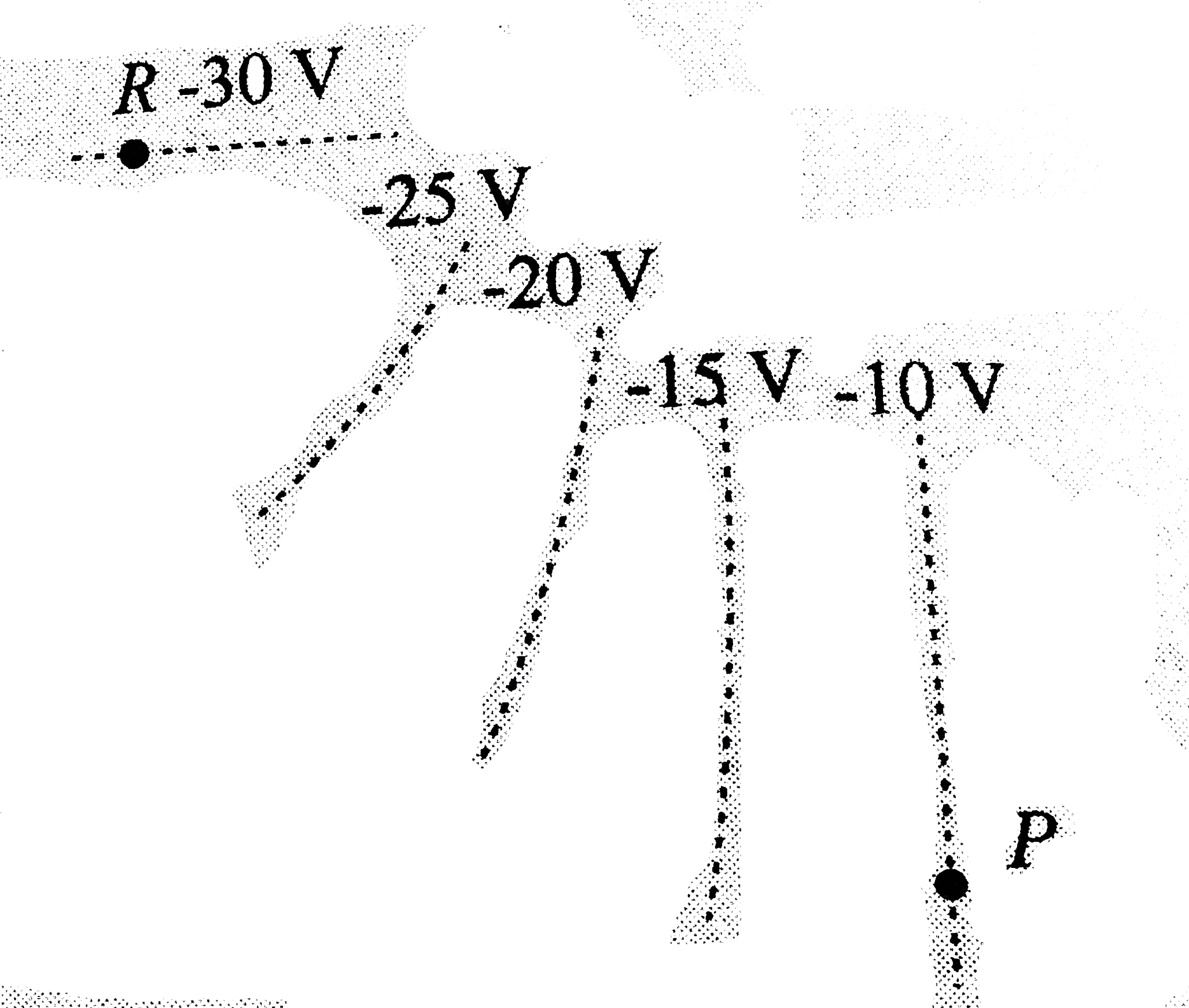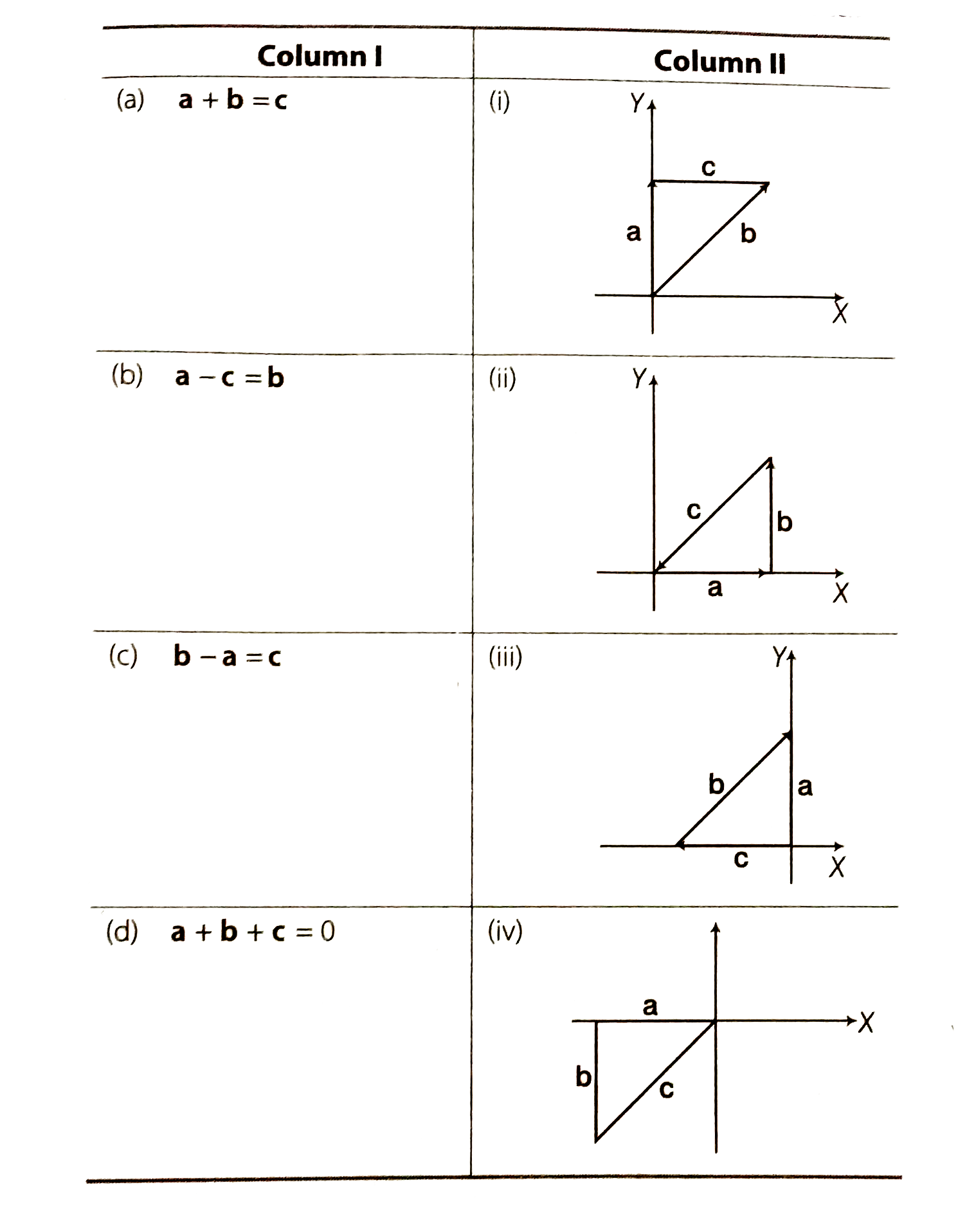Referring to the spherical equipotential lines in (Fig. 3.36)A, find
(i) →E=f(r)
(ii) →E - pattern.
a.  .
.
b.  .
.
c.  .
.
(a) For the first equipotential
60V×10100(m)=6Vm
For the second equipotential
30V×20100(m)=6Vm
For the third equipotential
10V×60100(m)=6Vm
We can understand that are product of potential (V) and radial distance (r) of equipotential lines [ as in Fig 3.36 B] is equal to 6Vm−1. Hence, general relation of potential (V) and radial distance (r) can be written as
V=6rVm−1
Since →E−(∂V)/(∂r)ˆr, substituting V=6/r, we have
→E=−∂∂r(−6r)ˆrVm−1
or →E=6r2ˆrVm−1
(b) Since →E is directed in ˆr - direction and obeys inverse square law, E must be outward [as shown in Fig. 3.36 C].
The above E - field must be caused by a positive point charge.
Topper's Solved these Questions
- BOOK - CENGAGE PHYSICSCHAPTER - ELECTRIC POTENTIALEXERCISE - Examples9videos
ELECTRIC POTENTIAL
- BOOK - CENGAGE PHYSICSCHAPTER - ELECTRIC POTENTIALEXERCISE - Exercise 3.123videos
ELECTRIC POTENTIAL
- BOOK - CENGAGE PHYSICSCHAPTER - ELECTRIC FLUX AND GAUSS LAWEXERCISE - MCQ s38videos
ELECTRIC FLUX AND GAUSS LAW
- BOOK - CENGAGE PHYSICSCHAPTER - ELECTRICAL MEASURING INSTRUMENTSEXERCISE - M.C.Q2videos
ELECTRICAL MEASURING INSTRUMENTS
Similar Questions
Knowledge Check
- Question 1 - Select One
(Figure 3.27) shows equipotential surfaces. What is the direction of electric field →E at P and R?
 .AAt P, electric field E is to the left and at R is upward.BAt P, electric field E is to the Right and at R is upward.CAt P, electric field E is to the left and at R is downward.DNone of the Above
.AAt P, electric field E is to the left and at R is upward.BAt P, electric field E is to the Right and at R is upward.CAt P, electric field E is to the left and at R is downward.DNone of the Above - Question 2 - Select One
If a charged particle goes unaccelerated in a region containing electric and magnetic fields,
(i) →E must be perpendicular to →B
(ii) →v must be perpendicular to →E
(iii) →v must be perpendicular to →B
(iv)E must be equal to vBA(i), (ii)B(ii), (iv)C(ii), (iii)D(i), (iv)
.Vectors →A,→B and →c are shown in figure.Find angle between (i) →A and →B. (ii) →A and →C. ,(iii)vec Bandvec C
View SolutionIf →r.→a=→r.→b=→r.→c=12 or some nonzero vector →r, then the area of the triangle whose vertices are A(→a),B(→b)andC(→c)is(→a,→b,→c are non-coplanar) ∣∣[→a→b→c]∣∣ b. |→r| c. ∣∣[→a→b→c]→r∣∣ d. none of these
View SolutionWrite the equation of the plane containing the lines →r=→a+λ→b and →r=→a+μ→c
View SolutionIf →a, →b, →c are three non-zero vectors, no two which are collinear and the vector →a+→b is collinear with →c, →b+→c is collinear with →a then, →a+→b+→c=
View SolutionVectors →Aand→B satisfying the vector equation →A+→B=→a,→A×→B=→band→A⋅→a=1,where→aand→b are given vectors, are a.→A=(→a×→b)−→aa2 b. →B=(→b×→a)+→a(a2−1)a2 c. →A=(→a×→b)+→aa2 d. →B=(→b×→a)−→a(a2−1)a2
View SolutionFind the equation of a straight line in the plane →r⋅→n=d which is parallel to →r=→a+λ→b and passes through the foot of the perpendicular drawn from point P(→a)→→r.→n=d(where→n.→b=0). a. →r=→a+(d−→a⋅→nn2)n+λ→b b. →r=→a+(d−→a⋅→nn)n+λ→b c. →r=→a+(→a⋅→n−dn2)n+λ→b d. →r=→a+(→a⋅→n−dn)n+λ→b
View Solution

